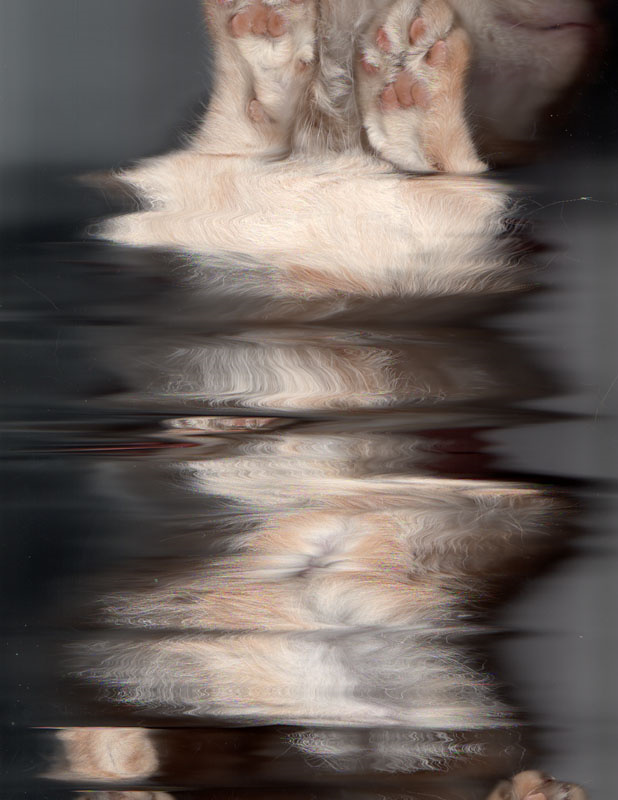That’s weird, I can just see the image… moving or not, shaking head side to side, or up and down, or just holding still: I just see the airplane no matter what.
Alarm clock! LOL
It’s my cat!
Or its business cat… Whatever.
Cats and their antics are known for causing some people to shake their heads.
Could be, but isn’t stochastic resonance. However, I have used it to give the impression of sharpening images by putting white noise around where the edge ought to be. It would be a bit tricky to do it with these hidden images because the width modulation is down at the pixel level anyhow.
I don’t know I thought I saw a cat in it when I looked at the picture and then I shook my head and I still saw a cat in it. Was I supposed to see anything else?
I have something similar to a congenital form of constant microsaccade, where my eyes twitch constantly. Unlike nystagmus there is no smooth return. I saw the image instantly and can easily see it at any reasonable distance. I also experience great hatred of LED Christmas lights due to their blinking. I can see 60Hz pulsing very easily, while 120Hz is harder but is very apparent in certain situations. Also old florescent tubes that flicker can give me vertigo…fun times.

Wow I had no idea!! Thanks GF

Oh kitty cat meow face.
I think looking at it from an angle is probably accomplishing the same effect as shaking your head. The distribution of rods and cones in the eyes isn’t completely uniform, and your peripheral vision is more sensitive to contrast than color.
Was thinking that the stochastic/noise component in the comparison as coming from the head movement (rather than being embedded into the image), and the resonance being the increased recognition in the optic system vs w/ a static gaze.
That sounds like a cool technique - would the noise be in a spatial sense or hue/value or some other axis?
Imagine looking at a 50% grey with a very coarse halftone pattern. You will see a regular pattern of black blobs on white. Now add a small amount of image. You will see a slightly distorted pattern of blobs. But if you can blur your vision by defocussing the eyes, or shaking the head, or something else to stop you seeing the blobs, then you will see the image instead of the blobs that make it.
Here, the halftone pattern is a line rather than the usual blobs, and they have added a colour image.
The adding white noise trick also works with sound. If you have acoustic guitar music from tape, you can add modulated blue noise (white noise with the low frequencies filtered out) and replace the 10-20 kHz with something that brightens and crispness the sounds.
This works best:

Did you see something completely different?
Yup. One very confused cat.
But it made my brain hurt.
This topic was automatically closed after 5 days. New replies are no longer allowed.

